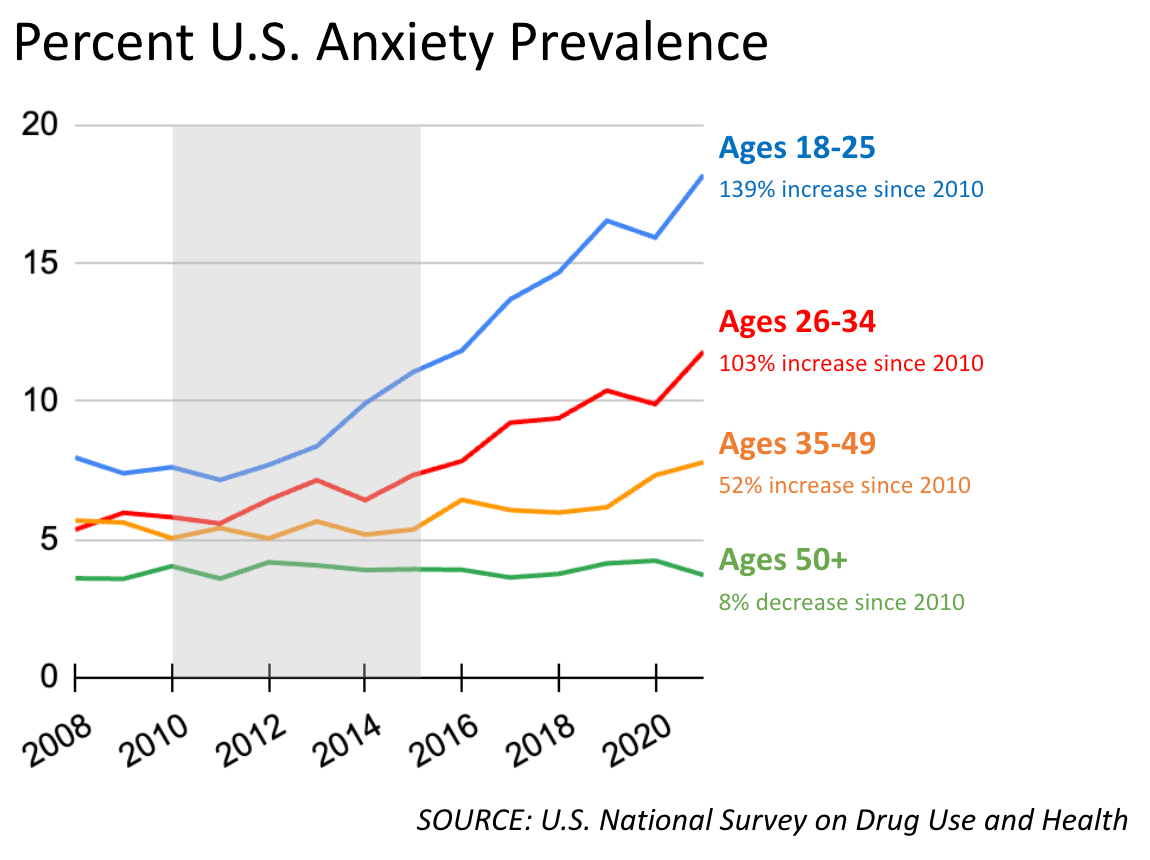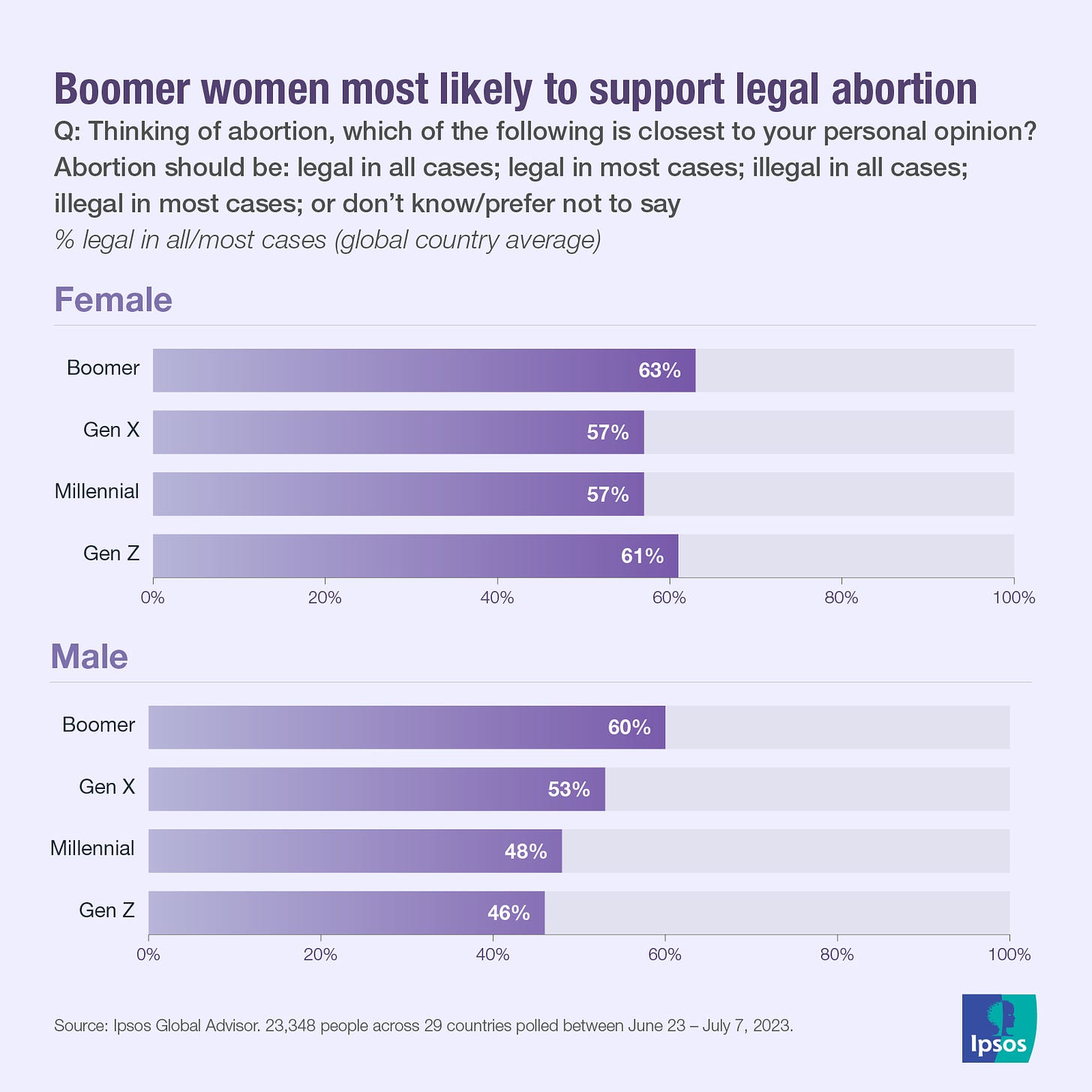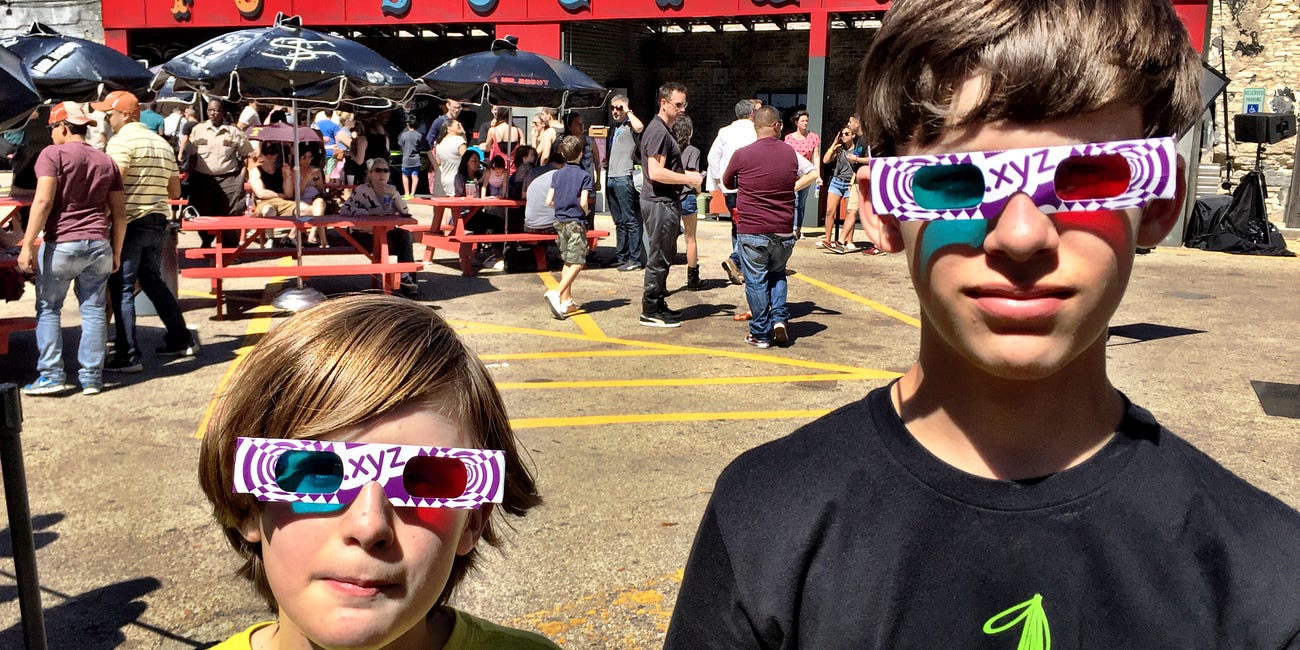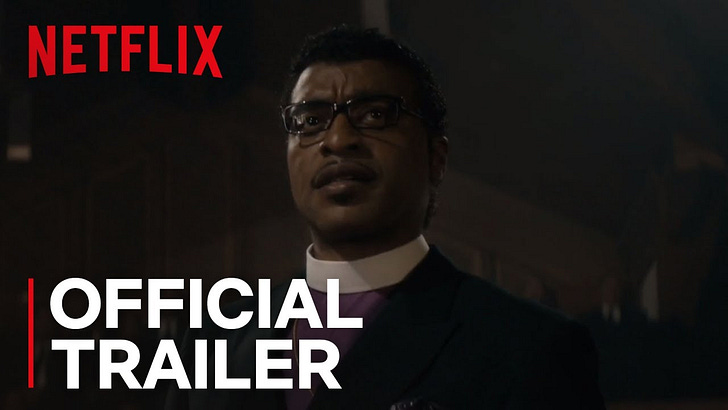This is the always free, reader-supported weekend edition of The Experiment, your official hopepunk newsletter. If you’d like to support my work, become a paid subscriber or check out the options below. But even if you don’t, this bugga free. Thanks for reading!
Once you learn to stop pooping in your pants, life is pretty great for a long time. It’s all school dances, summer break and keg stands until the pressures of career, family, and finances make you feel like there better be someone in this world enjoying their lives, because brother, it ain’t you. Then things ease up. Your hair turns gray, but you don’t mind so much. You feel the years in every ache and pain, but you notice you’re lighter now. You’re old, but you’re happy again.
That’s the way happiness usually works, say the social scientists. It goes in a U shape: happy when you’re young, cratering in middle age, and then happy again when you’re an old fart. But that’s not the way it’s working these days, at least in the United States which recently fell out of the Top 20 in the 2024 World Happiness Report. We’re ranked 23rd now, down eight spots since last year, and that isn’t even the worst part.
They’re at the level of their midlife crisis today
The kids are not alright. Americans under 30 rank 62nd in happiness, just ahead of Malaysia, Vietnam, and Albania.1 Far from experiencing the early peaks of happiness that characterized the early adulthood of older generations, today’s twentysomethings are exhibiting the symptoms of a midlife crisis, and the authors of the World Happiness Report are concerned.
“[I]n North America, and the U.S. in particular, youth now start lower than the adults in terms of well-being,” he said. “And that’s very disconcerting, because essentially it means that they’re at the level of their midlife crisis today and obviously begs the question of what’s next for them?”
In other words, people usually get less happy as they move into their thirties and forties. If today’s beginning adult is already as unhappy as a 40-year-old, are they at the bottom of their U shape, or are they going to get even unhappier?
At first this shocked me, but it’s not the first time I’ve heard canaries from this particular coal mine. Gen Z believes that the United States is in decline and is twice as likely as older Americans to experience depression and hopelessness. One out of every five members of Gen Z knows someone who has died by suicide. Almost that many think they would be better off dead.
The only time Generation Z didn’t have to worry about school shootings was when they were going to school online because of the plague.
Still, the bit about Gen Z’s midlife crisis threw me for a loop. I thought of my sons, of course, and of my friends’ children. This can’t be right, I thought. They’re all so happy. Leaving aside the obvious imbecility of measuring the emotional well-being of an entire American generation by a sample size of the two most-amazing young men ever, I quickly recalled their struggles that I had chalked up to their circumstances. There was my divorce, of course, and then, well, literally everything that has happened in their lifetimes.
That’s how trend-spotter Bruce Mehlman explained their unhappiness. If it seems like it’s been one thing after another, that’s because it has. In fact, the only time Generation Z didn’t have to worry about school shootings was when they were going to school online because of the plague. Missing from the Time covers below are the Oklahoma City bombing, the bungled war in Afghanistan, the misbegotten war in Iraq, Virginia Tech, Sandy Hook, Trayvon Martin, “Hands up, Don't shoot,” Donald Trump, the Pulse shooting, Charlottesville, George Floyd, the Las Vegas shooting, the Walmart shooting in El Paso, Dobbs, Jan. 6, Uvalde…
Jonathan Haidt, however, would redirect our attention to two of the Time covers above. A social psychologist at New York University’s Stern School of Business and author of The Anxious Generation: How the Great Rewiring of Childhood is Causing an Epidemic of Mental Illness, Haidt says it’s not as much to do with what’s been happening as how they are experiencing it differently than anyone else. Before their brains had developed the ability to focus, complete thoughts, and stay on task, Gen Z2 were given smart phones, and on these smart phones were apps for social media platforms. A child’s sense of well-being from then on became dependent upon an algorithm optimized to addict them. “When adolescents’ social lives moved onto smartphones and social media platforms, anxiety and depression surged among them,” writes Haidt.
I pitched this theory to a 20-something friend this week and was told about nudes being shared via Snapchat in middle school. He was outed over social media in high school. Yes, school shootings are scary, but imagine the terror of someone texting naked pictures of you when you were 12 years old. Now multiply that by a generation.
Gen Z developing an anxiety disorder on a historical scale leads to predictable outcomes. In The Republican Brain: The Science of Why They Deny Science- and Reality, Chris Mooney found that there are three ways to turn a liberal into a conservative, albeit temporarily: confuse them, scare them, or get them drunk. Keep someone thinking in their lizard brain, and prevent them from accessing higher-order thinking. Now hand them a device that addicts them to constant distraction where they share dystopian accounts of the news.
The more this generation stays in its amygdala, constantly processing emotion, fear, anger, and defensiveness, the quicker it devolves. Generational attitudes are usually fairly constant across sex. That is, what Boomer and Gen X women support when it comes to abortion is within 3-4 percentage points of what their male counterparts do as well.
This is not the case with Gen Z when it comes to supporting legal abortion. Gen Z women are second only to Boomer women when it comes to supporting legal abortion in either all or most cases. Gen Z men, on the other hand, are the group that least supports legal abortion. No wonder Gen Z is having much less sex than previous generations. The men are becoming un-you-know-whatable.
Scott Galloway chalks this up to loneliness.
Two-thirds of women under the age of 30 have a romantic partner vs. just one-third of men the same age. Men have fewer friends than they once did. Unfortunately, men’s loneliness can turn toxic, as they have weaker social networks and consequent guardrails. Lonely young men are more prone to conspiracy theories, nationalism, and misogynistic content. In sum, they risk becoming shitty citizens. The most striking, and frightening, data re the abortion debate is the group that registers the least support for a women’s right to choose: Gen Z men (age 12 to 27). Do you think this reflects their love for the unborn, or resentment of the living (women) … who they feel shunned by? It’s simple: Radicalized and lonely American men want uppity women to sit down.
I’d argue that loneliness is a co-morbidity but not the thing that’s attacking us. Outside of sports, where people of all ages, creeds, and political persuasions can agree on the validity and truth of things like final scores and the blindness of umpires, we have lost the ability to have a national conversation where there are two sides. Instead, we have a fractured media trying to both-sides events in which Trump has Republicans chewing glass and repeating Russian talking points, and Democrats just want you to sit still so we can tell you that you are wrong about inflation or forgiving college debt.
Because it’s not just the children. We were all traumatized by the same stuff, but the brains of older Americans entered the war fully cooked, so we can create elaborate rationalizations that justify our motivated reasoning. In quieter moments, the calmer among us counsel peace and consensus, but few feel safe enough to leave the mental bunkers these days. Common ground looks more like no man’s land, a good place to get shot where there’s nothing to hide behind.
Common ground looks more like no man’s land.
We’re as confused and freaked out as Gen Z is. We just have memories of what normal feels like and brains developed enough to convince us that things are going to calm down any day now. Yes, that’s it. Things have been bad before. Look at almost any period in history, and you’ll see that humans have survived worse. I’m sure if Biden’s re-elected/Trump’s convicted/a younger Democrat is nominated/things get so bad Republicans realize they have to publicly denounce Trump, then things will start to calm down.
You’ll see. I’m sure you’ll agree that you’re overreacting and making far too much of things. In fact, I’m looking forward to the day five years from now, and we can all look back and laugh at how Gen Z was really blowing this way out of proportion.
At least that’s what I’ve been telling myself for years instead of realizing that the rational—and not rationalized—reaction to what is now normal (school shootings, white nationalist violence, police violence against Black people, climate change, and the Trumpization of the Republican Party) is to feel profoundly unhappy. Yes, of course, giving smart phones to children is a really dumb idea in retrospect. I did it, too, and I feel pretty dumb that I let myself get peer-pressured into it.
But when my sons tell me how they feel, I don’t tell them they are wrong. When my sons’ generation tells us how they feel, maybe, instead of trying to diagnose them, we should fix the things that are rightfully upsetting them. Gen Z is not whining. They are trying to warn us.
Except for the Gen Z men on abortion. C’mon guys, grow up.
Jason Stanford is a co-author of NYT-best selling Forget the Alamo: The Rise and Fall of an American Myth. His bylines have appeared in the Washington Post, Time, and Texas Monthly, among others. Follow him on Threads at @jasonstanford, or email him at jason31170@gmail.com.
Further Reading
We are all Lear's Fool
Your "body glitters to the rhythm of the circadian clock."
Ain't the Beer Cold!
We set up a merch table in the back where you can get T-shirts, coffee mugs, and even tote bags now. Show the world that you’re part of The Experiment.
We’ve also got a tip jar, and I promise to waste every cent you give me on having fun, because writing this newsletter for you is how I have fun.
Buy the book Texas Lt. Gov. Dan Patrick banned from the Bullock Texas History Museum: Forget the Alamo: The Rise and Fall of the American Myth by Bryan Burrough, Chris Tomlinson, and myself is out from Penguin Random House. The New York Times bestseller is out in paperback now!
Usual caveats apply, obviously. This does not apply to children whose families could not afford smart phones, but having substitute taught at two public schools that served children from low-income families, the number of children in a Title 1 school who do not have smart phones are way outnumbered by those who do.













More bad news about today’s young men:
https://www.nytimes.com/2024/04/12/opinion/choking-teen-sex-brain-damage.html?unlocked_article_code=1.kE0.I7db.gooJ0dR4XTf7&smid=url-share
Powerful questions. Reading this provocative book right now, and while I don't agree with all of it, there’s definitely some “there” there:
Bad Therapy: Why the Kids Aren't Growing Up https://a.co/d/6C9uhKs